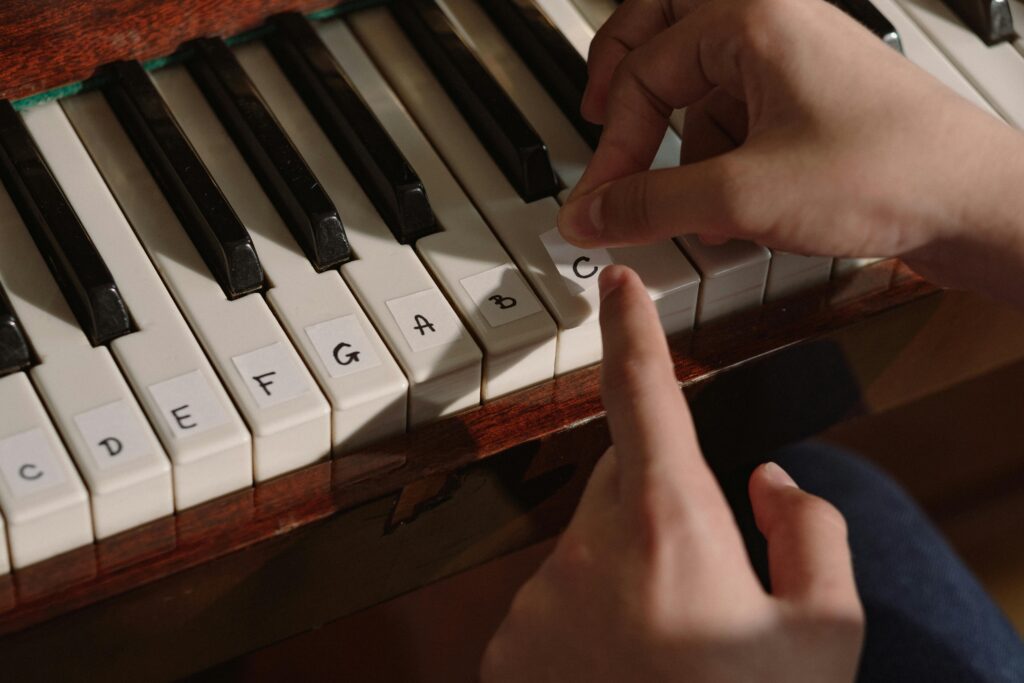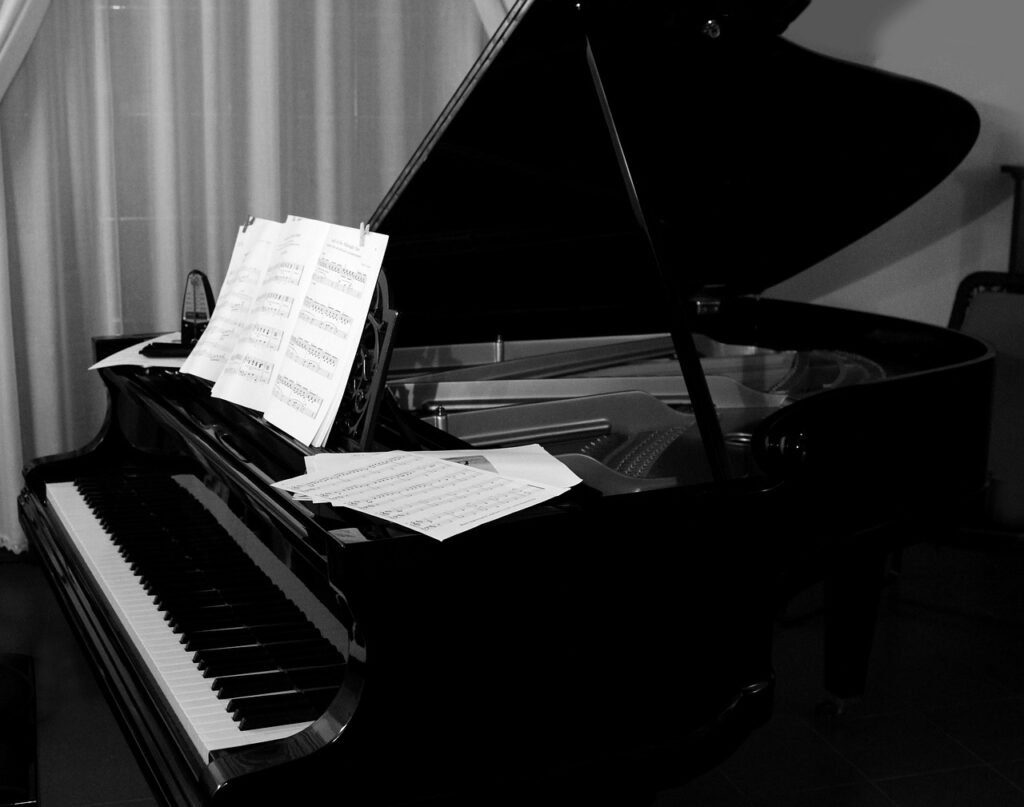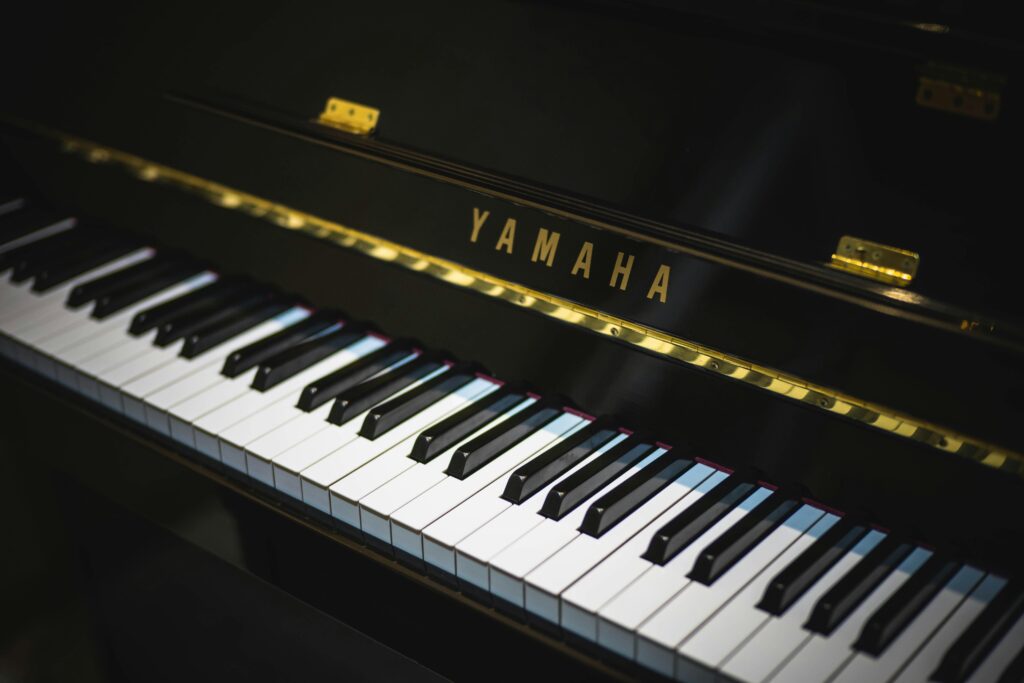Music, a universal language, has transcended cultural and linguistic barriers for centuries. At its core, music comprises musical notes, and understanding them is essential for any musician, whether you’re a beginner playing your first notes on a keyboard or a virtuoso on a classical instrument. In this article, we delve into a fundamental aspect of musical language: the naming of musical notes.
Musical notes are like the letters of a musical alphabet. They are the building blocks of melodies, harmonies, and rhythms that bring music to life. Learning these notes is a vital step in your musical journey.
At first glance, a full piano may seem overwhelming, with its impressive 88 keys.

But fortunately, there are only 12 unique notes on a piano. These 12 notes, each with distinct names, repeat across the keyboard. The difference between them lies in pitch: the keys on the left produce lower tones, while those on the right produce higher ones.
We’ll start by exploring the white and black keys on a musical keyboard, which form the foundation of Western musical notation. As we examine each set of keys, we’ll break down the notes they represent and explain their relationship to the broader language of music. Let’s embark on this exciting journey to discover music in its most elemental form.
The White Keys: The Essence of the Keyboard
The white keys on a musical keyboard are the most visible and distinctive part of the instrument. They are characterized by their light color and are arranged in a continuous sequence along the keyboard. These keys are essential for representing musical notes and form the foundation of Western musical notation.
Western music uses seven unique note names, represented by the letters: A, B, C, D, E, F and G.
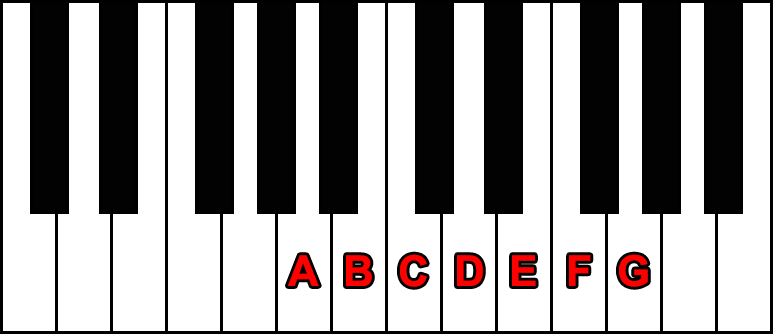
In many countries, especially in Europe and Latin America, these letter names correspond to the solfège system: C = Do, D = Re, E = Mi, F = Fa, G = Sol, A = La, B = Si. This system is widely taught and used in music education.
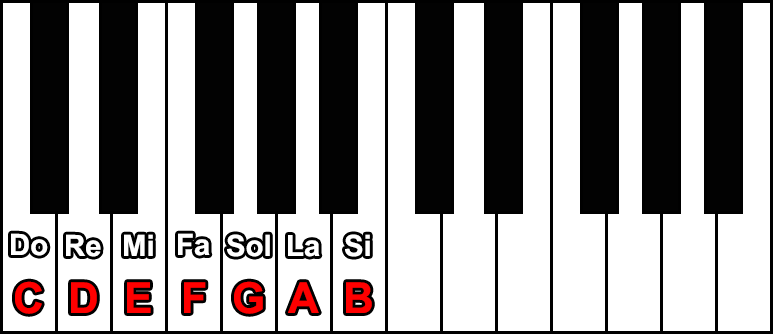
The white keys correspond to seven unique notes: C, D, E, F, G, A, and B. These repeat cyclically and are the basis of all melodies and harmonies. Below is a representation of how they are distributed:
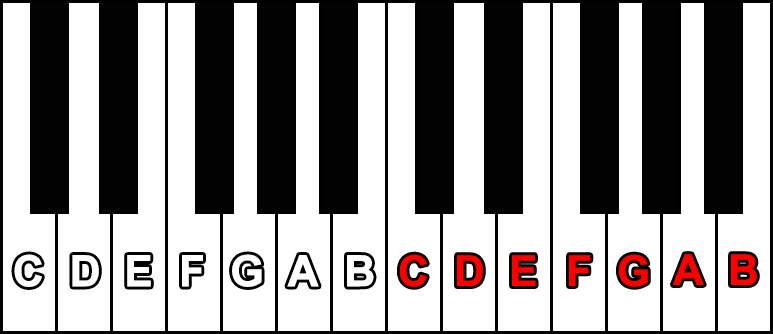
The notes on the white keys repeat across the keyboard, forming what is known as an octave. Alongside, the black keys also repeat in a distinct pattern: a group of two black keys followed by a group of three black keys. Find the group of two black keys—the white key immediately to the left is always a C.
It’s important to note that among natural notes (white keys), there are two pairs of adjacent notes that lack a black key between them: E and F, and B and C. These natural notes represent a half step, the smallest distance between notes in Western music.. From compact pianos ideal for beginners to professional-grade keyboards, we’ll discover how varying key counts cater to different musical styles and needs.
The Black Keys: Adding Nuance to Music
The black keys, often overlooked and intimidating, play a critical role in identifying the other notes on the keyboard due to their distinct pattern of two and three keys. These dark-colored keys are interspersed among the white keys and serve an essential purpose in musical notation by representing sharps (#) and flats (♭).
- Pressing the black key immediately to the right of a white key (e.g., D) produces a sharp, such as D#.
- Pressing the black key immediately to the left of a white key (e.g., D) produces a flat, such as D♭.
Thus, a D# is the same as an E♭, as it’s located between D and E. Similarly, a D♭ is also a C#.
There are two notable exceptions:
- There is no black key between E and F, making E# equivalent to F and Fb equivalent to E.
- There is no black key between B and C, making B# equivalent to C and Cb equivalent to B.
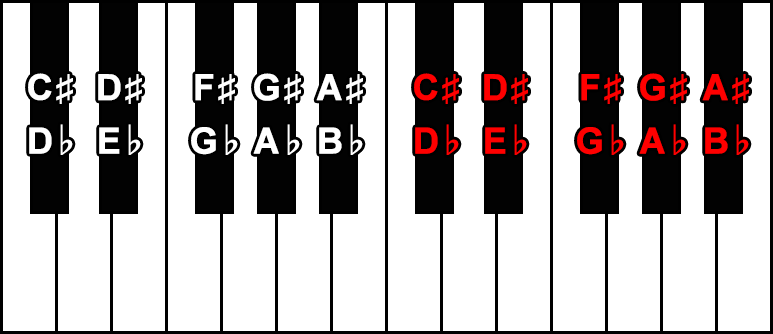
These five notes, represented by the black keys, are essential for various scales, chords, and musical progressions. Their presence allows musicians to explore a vast range of tones and emotions in their performances.
In summary, the keyboard consists of 7 white keys and 5 black keys, forming a total of 12 unique notes. These notes repeat in a consistent pattern across the keyboard, and by memorizing this pattern, you can always identify the notes.
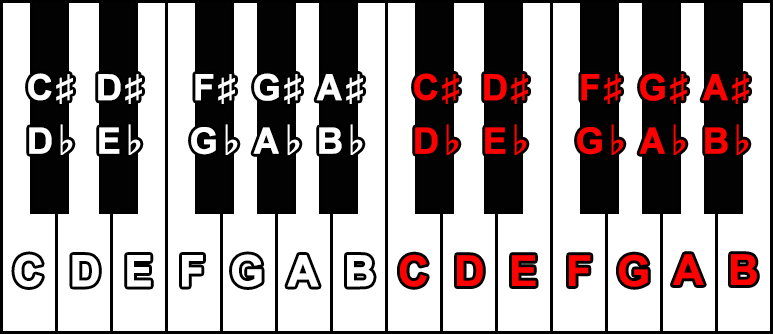
Middle C: The Reference Point of the Keyboard
With so many keys on a keyboard and the repetition of notes, it’s essential to have a reference point. This starting note is called Middle C (or C4), the fourth C on a full 88-key piano.
To locate Middle C, sit at the center of the keyboard, focusing on the middlemost area between both ends. Look for the group of two black keys closest to the center. Middle C is the white key immediately to the left of this pair of black keys, as shown in the image below:

Octaves: Repetition and Variety
Ever wondered why there are multiple sections with the same notes on a keyboard? The answer lies in octaves. An octave is a musical interval spanning eight notes. Starting at a note and moving eight steps up or down on the keyboard brings you to the same note in a different register.

This creates a repeating pattern across the keyboard where the same notes appear in different octaves. For example, starting at C and moving up or down eight white keys leads to another C, but in a higher or lower octave.
A standard 88-key piano has 7 complete octaves, providing an incredible range of sounds and creative possibilities. Each octave maintains the same structure, offering both repetition and variety in sound.
By understanding the naming and arrangement of piano keys, you unlock the ability to navigate the keyboard with confidence. Whether you’re playing simple melodies or intricate compositions, this knowledge forms the foundation for your musical growth. Let the journey begin!

